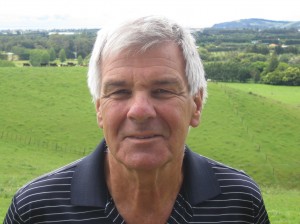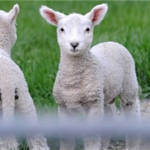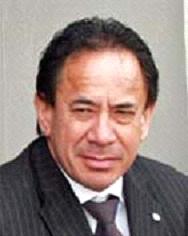 The Pastoral Greenhouse Gas Research Consortium (PGgRc) has just announced that it has secured funding for a further seven years’ research into greenhouse gas (GHG) mitigation. $2.3 million per annum will be contributed by industry partners to be matched by the Ministry of Business, Innovation and Employment with the balance to come from AgResearch in its capacity as leader of the research project. Meat industry commentator Allan Barber has taken a look in his latest blog post.
The Pastoral Greenhouse Gas Research Consortium (PGgRc) has just announced that it has secured funding for a further seven years’ research into greenhouse gas (GHG) mitigation. $2.3 million per annum will be contributed by industry partners to be matched by the Ministry of Business, Innovation and Employment with the balance to come from AgResearch in its capacity as leader of the research project. Meat industry commentator Allan Barber has taken a look in his latest blog post.
The consortium has been in existence since 2002 and to date has spent about $45 million of 50/50 joint venture funding from industry and government. Its members are Fonterra, Beef & Lamb New Zealand, DairyNZ, AgResearch, Landcorp Farming, DEEResearch, PGG Wrightson Ltd and Fertiliser Association Joint Venture.
As its name indicates, the consortium’s sole focus since it started 11 years ago has been on finding ways to mitigate greenhouse gas emissions and during that period it has made some significant advances. It has developed knowledge specifically in sequencing the first rumen methanogen genome, developing a low emission sheep flock and finding feeds that can reduce methane emissions.
Mark Aspin, consortium manager, told me that a continuation of the funding will enable the programme to focus on five key areas of research:
- Refining animal breeding tools for low emission livestock
- Identifying more low greenhouse gas feeds
- Identifying inhibitors that reduce ruminant emissions
- Developing a vaccine to reduce ruminant emissions
- Understanding the productivity effects and enhancing the adoption of mitigations.
The refreshed research programme, while recognising the long term commitment required, will be strongly focused on delivery of mitigation solutions, developed through an increased partnership between the consortium and the New Zealand Agricultural Research Centre (NZAGRC). Both of these organisations will coordinate their operations to ensure rapid delivery of effective options for farmers.
While New Zealand’s greenhouse gas emissions would constitute a significant proportion of our obligations under any future commitment to reduce emissions, political points scoring tends to obscure why it is so critical to get it right. Our economy and our agricultural sector in particular both depend on deciding on the correct entry point which is, I suspect, why the present Government has been so reluctant to commit itself.
Agriculture contributes 46 percent of New Zealand’s greenhouse gas emissions, a proportion no other country comes even remotely close to producing. Ireland with 27 percent is the closest and all other first world economies are in single figures.
The PGgRc has set itself an ambitious goal, stating in its press release “The new work aims to develop a suite of ready-made tools that will reduce greenhouse gases by 30 per cent by 2030 while supporting the agricultural industry’s growth targets of two per cent each year.” The benchmark year is 2008 when I understand emissions were at 1990 levels. As Aspin said “it’s a big challenge, but we think we can get there.”
I suspect the Green party won’t be satisfied with this progress, because anything short of total commitment to eliminating greenhouse gases is unacceptable, whatever it costs the country. But it is a very solid programme of work backed by science and industry and public money which has some challenging, but achievable goals.
The best thing about it is that it won’t send agriculture and the country into a state of bankruptcy, but it should produce some real improvements in our GHG emissions.
Allan Barber is a meat industry commentator and has his own blog Barber’s Meaty Issues. This item has also appeared at www.interest.co.nz.








